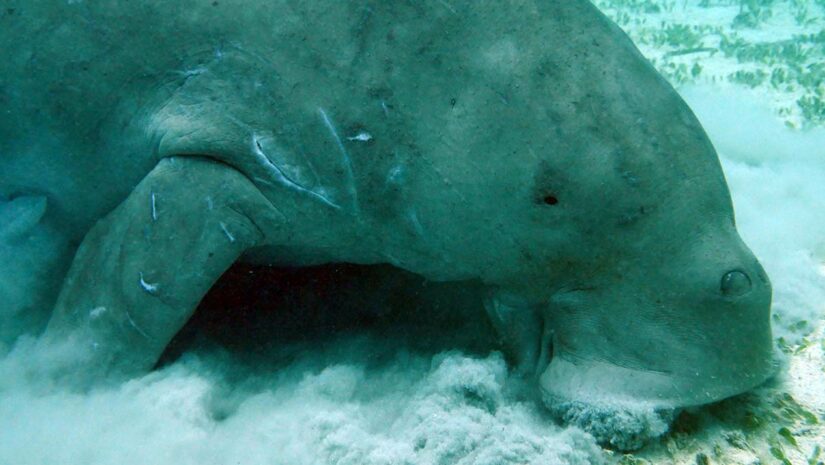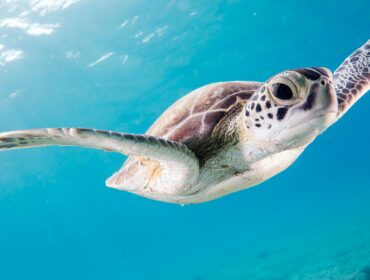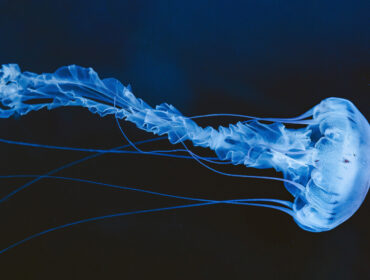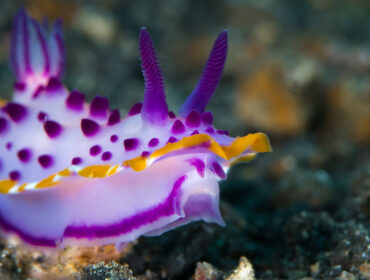This 8.9 foot, 660 lb (300 kg) bristly, blubbery, barnacled beast known as a Dugong is probably one of the most unusual sea creatures you can encounter when you dive.
Looking like a cross between a walrus and a whale, the dugong is neither. This mammal is part of the Manatee family and has paddle-like forearms and a whale-like tail. Its most distinguishing feature is its face with small, widespread eyes, small valve-like nostrils on the tip of its nose, and a vast downward-turned muzzle-like snout similar to the beginning of an elephant trunk, sometimes with the presence of tusks. Not known for their slender silhouette, dugongs are surprisingly graceful swimmers. However, you are likelier to see them kicking up a sand cloud on the bottom of the sea bed as they graze on seagrasses.
Dugongs are widely distributed in the waters of 37 countries along the western Pacific and Indian Oceans. Found in warm shallow waters, dugongs need a source of fresh water for drinking and are often found near mangroves, protected bays, and inshore islands. Australia has the largest population of this species. Groups of 10,000 or more are on the Great Barrier Reef of Australia, at Shark Bay, Moreton Bay in Brisbane, and Torres Strait south of New Guinea. A few dugongs are found in the strait between Malaysia and Singapore, in the Philippines, in the Andaman Sea, in the Arabian Sea near Pakistan, and in the Red Sea in Egypt at Marsa Alam.
Fun Dugong Facts
- Dugongs are herbivores
- They can live up to 70 years
- They can grow up to 10 feet
- They can weigh anywhere from 510 lbs to 2,000 lbs
- Also called the Sea Cow
- When in a group, they are referred to as a herd
- They are a threatened species and considered endangered
- They are related to the manatee and elephant
- They can stay underwater for up to six minutes
- They can stand on their tail
- They are the inspiration behind ancient tales of mermaids and sirens
- The name Dugong is derived from the Malay language and means “lady of the sea.”
- They can reach a swim speed of up to 15.5 mph
- They have been heavily hunted for their meat, hide, and oil
- They were referenced in the Bible
- Males have two tusks
- They have poor vision, acute hearing, and a strong sense of smell
- They have highly dense bones, which act as a ballast to keep them afloat
- They need fresh water sources for drinking




